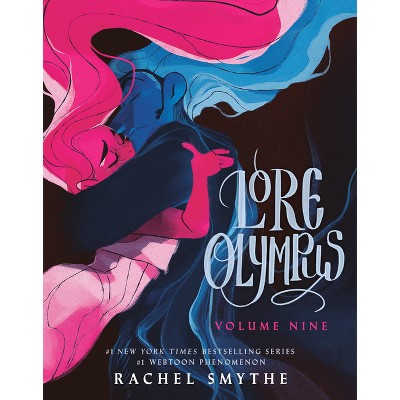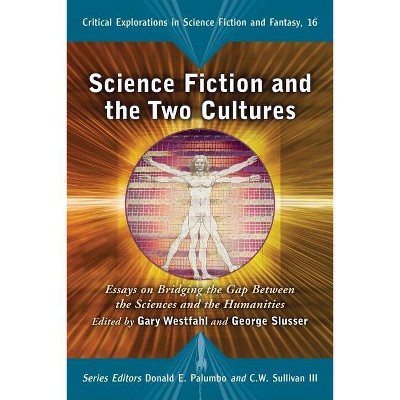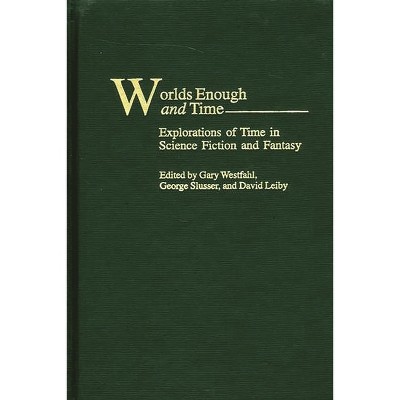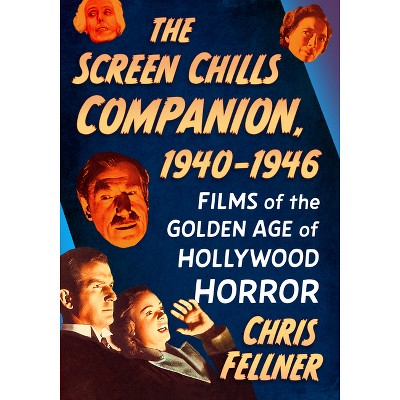Sponsored

Spacesuit Film - by Gary Westfahl (Paperback)
In Stock
Sponsored
About this item
Highlights
- Filmmakers employ various images to suggest the strangeness of outer space, but protective spacesuits most powerfully communicate its dangers and the frailty of humans beyond the cradle of Earth.
- About the Author: Gary Westfahl, a professor emeritus at the University of La Verne, California, has authored, edited, or co-edited 27 books about science fiction and fantasy, and hundreds of articles and reviews.
- 371 Pages
- Performing Arts, Film
Description
About the Book
"This critical history comprehensively examines science fiction films that portray space travel realistically by having characters wear spacesuits. It discusses classics; innumerable films which gesture toward realism but betray that goal with melodramatic villains, low comedy, or improbably monsters; the distinctive spacesuit films of Western Europe, Russia and Japan; and America's televised Apollo 11 moon landing (1969)"--Provided by publisher.Book Synopsis
Filmmakers employ various images to suggest the strangeness of outer space, but protective spacesuits most powerfully communicate its dangers and the frailty of humans beyond the cradle of Earth. (Many films set in space, however, forgo spacesuits altogether, reluctant to hide famous faces behind bulky helmets and ill-fitting jumpsuits.) This critical history comprehensively examines science fiction films that portray space travel realistically (and sometimes not quite so) by having characters wear spacesuits. Beginning [A] with the pioneering Himmelskibet (1918) and Woman on the Moon (1929), it discusses [B] other classics in this tradition, including Destination Moon (1950), Riders to the Stars (1954), and 2001: A Space Odyssey (1968); [C] films that gesture toward realism but betray that goal with melodramatic villains, low comedy, or improbable monsters; [D] the distinctive spacesuit films of Western Europe, Russia and Japan; and [E] America's spectacular real-life spacesuit film, the televised Apollo 11 moon landing (1969).
Review Quotes
"illuminating and entertaining"--Locus; "a breath of fresh air...recommend...an amazing accomplishment and a definitive read"--Filmfax; "Westfahl should be commended for opening this path and others to exploration"--SFRA Review; "Westfahl provides a detailed study of this particular film genre, summarizing movies both famous and obscure"--The Space Review; "a critical history of the appearance of spacesuits in film"--Reference & Research Book News; "a must. A great research book"--SF Crowsnest; "valuable...of great interest...informative"--Journal of the Fantastic in the Arts; "both sf and media scholars have benefited much over the years from the work of Gary Westfahl and the publishing strategy of McFarland. Westfahl is a prolific and influential scholar who has authored a number of important historical studies of sf literature"--Science Fiction Studies.
About the Author
Gary Westfahl, a professor emeritus at the University of La Verne, California, has authored, edited, or co-edited 27 books about science fiction and fantasy, and hundreds of articles and reviews. In 2003, he received the Science Fiction Research Association's Pilgrim Award for his lifetime contributions to science fiction and fantasy scholarship.Shipping details
Return details
Frequently bought together

Trending Non-Fiction
















